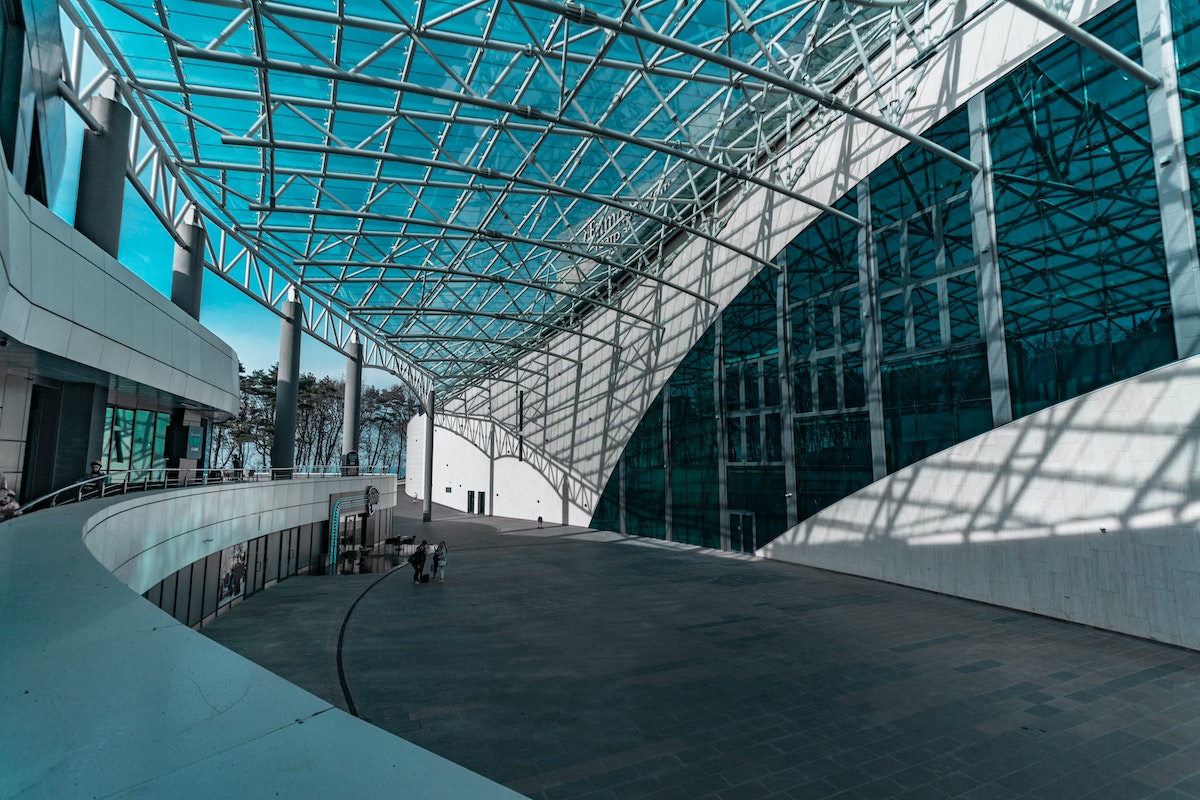Sustainability in Workplace Designs

As global awareness of environmental challenges increases, companies embrace sustainable practices to reduce their ecological footprint. One significant area where sustainability can make a substantial impact is workplace design. Incorporating eco-conscious elements in office spaces contributes to a greener planet and enhances employee well-being and productivity. This article explores innovative ways to integrate sustainability into workplace designs, creating environments that promote a better tomorrow for businesses and the planet.

- Biophilic Design: Connecting with Nature
Biophilic design is a transformative approach that seeks to connect people with nature in the built environment. By integrating natural elements like plants, water features, and raw materials, workplaces create spaces that reduce stress and promote well-being. Enhance the biophilic design with a mesh ceiling, mirroring sunlight filtering through leaves, for a more natural ambience and connection with nature. Employees feel more connected to their surroundings, increasing job satisfaction and reducing absenteeism. Biophilic design goes beyond aesthetics; it positively impacts employee health and performance, making it a key component of sustainable workplace design.
- Energy-Efficient Lighting and Appliances
Energy-efficient lighting and appliances form the backbone of a sustainable workplace, aiming to minimise energy consumption and reduce the carbon footprint. LED lighting is a game-changer, consuming significantly less energy and having a longer lifespan than traditional lighting. Intelligent lighting systems with motion sensors and automated controls adjust illumination based on occupancy, ensuring lights are only on when needed. Energy-efficient appliances like smart HVAC systems and low-power electronics reduce energy usage and lower utility bills. By adopting energy-efficient practices, businesses can demonstrate their commitment to sustainability while enjoying long-term cost savings.
- Sustainable Materials
Sustainable materials emphasise responsible sourcing and environmentally conscious production processes. Opting for products made from recycled or reclaimed materials supports the circular economy and reduces demand for virgin resources. Consider Kingspan soffit board, an eco-friendly and high-performance material, to enhance building insulation and minimise environmental impact. Using certified wood from well-managed forests ensures a positive ecological impact. By investing in sustainable materials, companies promote eco-friendly practices within their operations and contribute to the broader movement towards more responsible consumption and production.
- Waste Reduction and Recycling Initiatives
Waste reduction and recycling initiatives are essential for minimising the environmental impact of workplace operations. Implementing waste segregation systems and recycling bins throughout the office encourages employees to divert recyclable materials from landfills. Educating staff about waste reduction and responsible disposal practices fosters a culture of environmental consciousness. Partnering with recycling facilities for electronic waste ensures proper recycling and disposal of obsolete devices. Businesses actively participate in sustainable waste management by reducing waste and promoting recycling, aligning with global efforts to address the growing waste crisis.
- Green Energy Integration
Green energy integration involves transitioning from fossil fuels to renewable energy sources like solar, wind, or geothermal. By generating clean energy on-site or sourcing it from renewable providers, businesses can significantly reduce their greenhouse gas emissions and mitigate climate change impacts. Installing solar panels on rooftops or in parking lots, utilising wind turbines, or tapping into geothermal energy showcases a commitment to sustainability. Green energy integration aligns with corporate social responsibility and positions companies as leaders in the transition towards a low-carbon future.
- Employee Engagement and Education
Employee engagement and education are pivotal for the success of sustainable workplace initiatives. Educating employees about sustainability principles, practices, and their rationale fosters a sense of ownership and commitment to environmental stewardship. Engaging employees in sustainability workshops, green teams, and volunteer activities empowers them to participate actively in green initiatives and identify opportunities for improvement. Encouraging staff to share innovative ideas promotes a culture of continuous improvement and collective responsibility. By engaging and educating employees, businesses create a shared vision of sustainability, making it a driving force behind the company’s sustainability efforts.
- Flexibility and Remote Work Options
Offering flexible work arrangements and remote work options supports sustainability objectives in multiple ways. Embracing flexible hours and remote work reduces the need for office space, reducing energy consumption and lowering carbon emissions. Additionally, it improves employee work-life balance, enhancing job satisfaction and productivity. Fewer commutes mean less traffic congestion and air pollution, contributing to a greener environment. Flexibility and remote work options showcase a progressive approach to work culture, making the organisation attractive for environmentally-conscious employees seeking a sustainable work-life balance.
Integrating these sustainable design concepts into the workplace creates a healthier, more productive, and environmentally conscious environment. Biophilic design brings nature indoors, energy-efficient lighting reduces energy consumption, and sustainable materials minimise ecological footprints. Waste reduction initiatives and recycling efforts promote responsible resource management. Adopting renewable energy demonstrates a commitment to a cleaner future. Engaging and educating employees fosters a culture of environmental responsibility, and offering flexible work options supports a sustainable work-life balance. By implementing these practices, businesses can build workplaces that align with their ecological values and contribute to a greener and more sustainable world.



